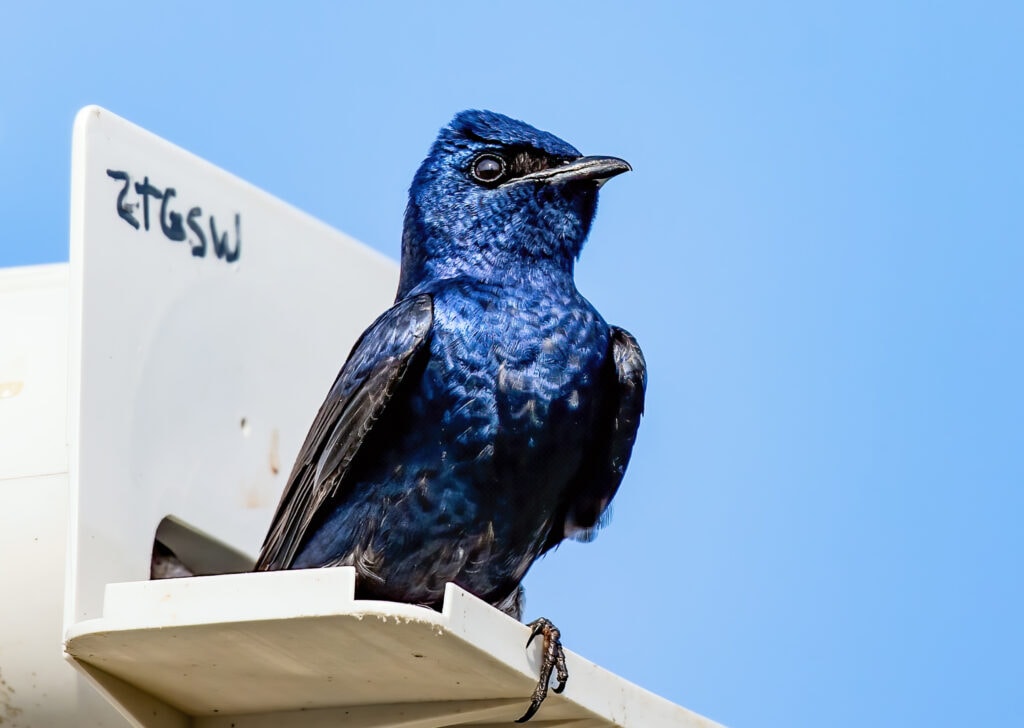The purple martin is a bird which shares a unique relationship with humans, especially in the eastern portion of the United States. Beginning centuries ago, before European settlers ever arrived in the U.S., some Native American tribes used hollowed out gourds as homes for purple martins. Presumably, this was done to encourage the birds to live in the villages and act as free pest control. When the settlers arrived, they too enjoyed building houses for purple martins. At one time, purple martin houses were so common that almost every residence had one. John James Audubon, the namesake of the Audubon society, once said that he would choose which inn to stay in based upon the quality of their martin house. Inns which housed their local birds in nice accommodations could be expected to do the same for their guests.
Related Article: Last Surviving Siberian Crane Leaves Iran for Breeding Grounds in Siberia
All of this resulted in a special connection between purple martins and humans. Purple martins are cavity nesters, meaning that they like to nest in holes or openings in trees. They are not able to excavate these cavities themselves and they are dependent upon naturally occurring cavities or abandoned nests from more industrious cavity nesters like woodpeckers. Such accommodations are rare and can be difficult to find. That’s why, in the eastern United States, purple martins nest almost exclusively in man-made martin houses.
Purple martins are migratory birds which spend their winters in the rainforests of South America. When spring comes, these large members of the swallow family migrate up to 7,000 miles to their spring and summer homes in North America. The return of the purple martin marks the beginning of spring in some regions and is a long-awaited event for bird enthusiasts. This is especially true for those birders and nature lovers who maintain purple martin houses.
Now, in late February and early March, purple martin “landlords,” those dedicated martin-lovers who build and maintain large multi-nest housing structures for purple martins, are beginning to report that the purple martin has returned to the American South. As of the first week of March, birders in Oklahoma, Arkansas, Tennessee, and Texas have reported the triumphant return of the first migrating purple martins of the season.
While purple martins have long represented the symbiotic relationships that form between us and the wildlife with whom we share this planet, in much of the eastern United States, they have come to represent a sort of homecoming. The purple martin’s dependable return signals a sigh of relief for regions that have been gripped by winter. As the weather warms, old friends return and new life rejuvenates the land. For some birders, the purple martin migration is much like a “Groundhog Day” prediction which rings in the springtime.
Popular Article: Flamingo the Pink Pigeon Is A Reminder To Rethink Dove Releases

